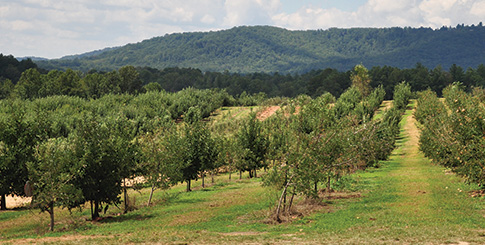A case in point are Asian and Hispanic specialty shops. Elvin Peña, president of Super Fresh, LLC in Charlotte, sells to supermarket chains, independent stores, and area restaurants. “The Charlotte area keeps growing, especially the Hispanic market,” he says. Among his top selling items are avocados, limes, papayas, pineapples, mangos, and Roma tomatoes.
In addition to a crowded retail marketplace, technology is playing a bigger role in the sector as well, notes Gary James, director of sales for Walter P. Rawl & Sons, Inc. in Pelion, SC. “The variety of different ways people are buying their groceries has led to online ordering, niche foodservice businesses, and new retail formats, which have made this an interesting time to be in the produce business,” he says. changing channels
FRESH FORUM
How much impact has the state’s fresh produce branding program had on your business?Jeff Taylor, Taylor Boys Produce, Inc., Enoree, SC
It has had a tremendous impact, especially in the school systems. The school districts have had increased demand over the past 10 years.Vaughn Ford, Ford’s Produce Company, Inc., Raleigh, NC
They do an excellent job promoting our products, but more importantly, in educating and supporting local farmers.Darrell Holifield, Capital Produce Distributors, Inc., Columbia, SC
It’s a good thing and an effective program. I notice a lot of retail chains focus on it.Randy Bailey, Bailey Farms Inc., Oxford, NC
We’re part of those programs; in many ways, promoting local has helped our business.Daryl Johnston, Titan Farms Sales, LLC, Ridge Spring, SC
They do a good job helping to represent us not only in the state, but outside the state as well. The South Carolina Department of Agriculture does a very good job partnering with the local growers to help expand our business.
Even transportation is changing in the Carolina produce pipeline. Whole-salers accustomed to tractor-trailers are now delivering to restaurants and other foodservice customers with smaller vehicles. The streamlined trucks not only save on fuel and reduce environmental impact, but are easier to park in busy cities than big rigs.
Despite population growth and many suppliers reporting solid sales, there are still challenges affecting terminal markets. One negative in the food market over the last few years is the trend for some larger grocery retailers to cut out the middleman in favor of going direct to growers and managing their own distribution networks. This has forced wholesalers to differentiate and seek new opportunities.
“Even though they’ve lost volume with chain stores, wholesalers have changed their business models,” Best explains. “They’re handling more high-end items, more local product, and are serving restaurants and other foodservice institutions.” Three of the Raleigh market’s vendors, he says, “are handling school lunches for the counties. They bid and provide schools with fresh produce.”



